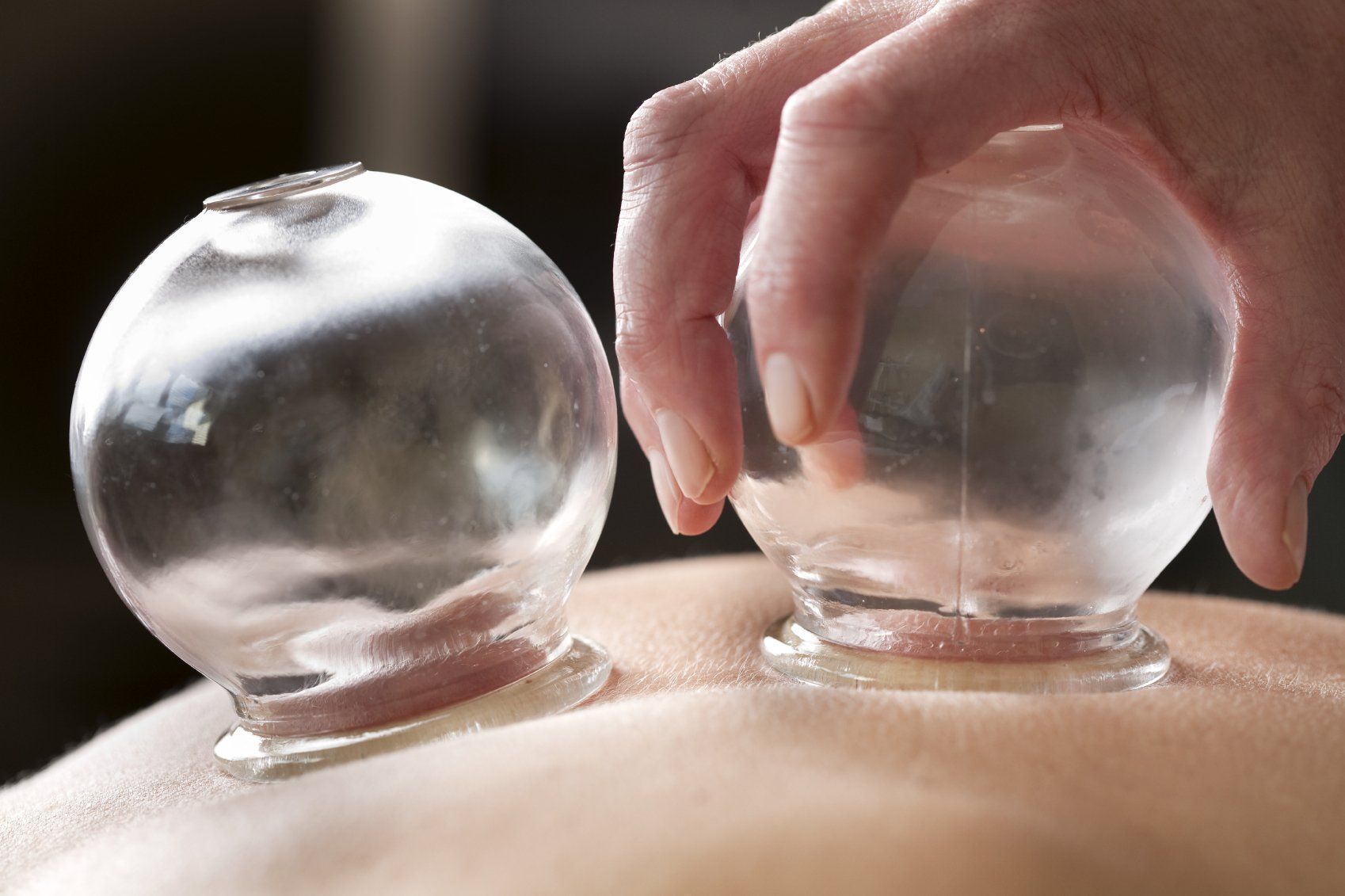Practice Dr. Katmer
Statutory insured patients - private patients and self-payers
Schröpfen-Cupping-Hijama-Cupping

"Cupping has the power to remove harmful substances from the head, reduce pain in the same part, relieve inflammation, restore appetite, strengthen a weak stomach, remove dizziness and the tendency to faint, draw deep-seated harmful substances to the surface, dry up discharge, stop bleeding, promote menstrual flow, stop the tendency to pus formation in infections, relieve rigidity, accelerate and relieve the healing crisis in diseases, drive away drowsiness, promote natural calm, remove heaviness. These and many similar complaints are alleviated by the correct application of the cupping heads, dry or bloody."
(Alpinus-Herodotus 413 BC)
"Disease is an unnatural state of the body. Nature tries her best to restore unnatural conditions to the healthy state. The task of the physician is to cooperate with her. When a patient is suffering from disease, nature strives to overcome the pathogenic factors, and when she is evidently succeeding in doing so, the physician should not interfere. But if she is about to succumb in this struggle, he must come to her aid by doing what she would do if she could. The physician must protect what is in accordance with nature and remove what is not in accordance with it."
(Galen ca. 129-200 AD)
cupping
Cupping is a form of stimulation therapy that is based on negative pressure in the so-called cupping heads. Cupping stimulates the immune system, metabolism and lymph flow through the negative pressure. It has proven particularly effective in cases of blood and Qi stagnation.
Nowadays, cupping glasses are used for cupping, which used to be made of bamboo. The cupping glasses are heated before being placed on the body so that the hot air escapes from the glass and a vacuum is created. The glass is quickly placed on the specific areas of the skin, which sucks the skin in. Two forms of cupping are used. Which form is used depends on whether the area of the body is suffering from anemia or excess blood.
Dry cupping:
If anemia is present, dry cupping is preferred. A flame is used to create a vacuum in the cupping head, which is then quickly placed on the skin. The skin is sucked in by the negative pressure. The suction effect therapeutically removes excess cold and moisture from the body, so that the body is back in balance. It can happen that a small amount of blood is sucked out, which manifests itself in the form of local bruising. However, this is not harmful and disappears after just 1-2 days.
Bloody cupping:
Bloody cupping is used when there is a local excess of blood. It is a modified form of dry cupping, where the cupping sites are lightly scratched iatrogenically. The small wound is painless and supports the blood-draining effect of cupping. As soon as the cupping head is placed on the wound, blood flows out of the wound in a controlled manner.
After cupping treatment, most patients feel pleasant and relieved because the energetic conditions are balanced again.
Pulsating cupping therapy:
Pulsating cupping therapy is a combination of classic cupping, massage and lymphatic drainage. This is achieved by superimposing a static negative pressure with harmonic vacuum pulses. The duration of the oscillation, the intensity of the oscillation and the static negative pressure are varied depending on the tissue and the type of therapy. If the therapy is used correctly, the patient feels a similarly beneficial effect as with a classic massage. In addition, this technique enables the therapist to move deep layers of tissue, which releases blockages and re-supplies the tissue with nutrient fluids. This is used, for example, for arthritis, circulatory disorders, muscle hardening, scar treatment and for fascia therapy.
Areas of application
Cupping is said to be helpful for a variety of complaints, including migraines
rheumatism
Disc problems
Lumbago
Knee problems
Carpal tunnel syndrome
high blood pressure
sciatica
Tonsil problems (especially in the special form of tonsil problems)
bronchitis
asthma
Headache
Kidney failure
Weather sensitivity
Hypotension
fatigue
depressions
Weaknesses
Digestive problems
Cardiovascular diseases
Organ problems
Fever
A cold
flu






